Geocache – Andhra University, Visakhapatnam
Department of Geo-Engineering & RDT, Andhra University have conducted Geocaching Activity (A World-Wide Scavenger Hunt) on the Occasion of GIS Day 2023 which is celebrated annually on November 15.
Students explored Andhra University North Campus to Find Interesting Geocache using the Web Map created using Basic HTML, JavaScript and Leaflet Library.
Create Your Own Geocaching Activity using the sample code provided here.
Geocaching at Andhra University
Synaesthesia – When the Number 4 is a Red Apple
Synaesthesia is a condition where instead of just one sense getting activated by a stimulus, another unrelated sense also gets activated simultaneously in the brain. For example, when a person sees the number 3, he also hears a certain kind of music associated with that number. It has been reported that almost 2-4% of the population has synaesthesia. The synaesthetic response happens involuntarily in the person.
Causes of Synaesthesia
The exact cause of Synaesthesia is not yet concluded upon but there are several theories about it.
1. According to one of the theories, it occurs due to an increased number of connections in the brain. In the average brain, there are a limited number of connections between different regions of the brains, but in the brains of synaesthetes there is an increase in the ‘cross communication’. The word “cross-wiring” between different regions of the brain is used to explain the different types of synaesthesia.
2. Another theory says that synaesthesia occurs due to the rearrangement of the architecture of the brain. There are multiple inputs of sensory information carried to the brain, where it later segregated into specific regions of the brain for interpretation. A person who has synaesthesia is known as a synesthete. In synaesthetes, this multisensory feedback instead of getting segregated into a specific sense, gets jumbled up.
3. The third theory states that all people have the connections in the brain that allow them to connect various sensory information but only synaesthesia have the ability to use these connections.
Types of Synaesthesia
There are various forms of synaesthesia. It is classified in two broad classes such as Projective and Associative synaesthesia. In Projective synaesthesia, the person literally sees a colour, shape, hears sound, or feels a texture in response to a particular stimulus. In Associative Synaesthesia, a person strongly associates one stimulus with another but does not really experience it.
Let us have a look at the various forms of Synaesthesia
Grapheme-Colour Synaesthesia is the most common type of synaesthesia. In this type, the synesthete associated letters and numbers with colours.
In this type of synaesthesia, “cross-wiring’ occurs between numbers region and the colour region of the brain. Some people with Graphene- colour Synaesthesia have been claimed to have more grey matter in the fusiform gyrus.

This is the region of the brain that is associated with the processing of visual information. It is also said that people with synaesthesia are better at distinguishing between different shades of colours than others.
Chromesthesia is also known as sound to colour synaesthesia. In this type, when a person hears a particular sound, the person experiences a colour. People with Chromesthesia may be very good at identifying the various notes in music.

Spatial – Sequence Synaesthesia– deals with the arrangement of numbers or objects in a specific place in space. For example, the individual may have a dedicated region for each month of the year or day of the week around him. The person sees these allotted spaces through the mind’s eye.
Test for Synaesthesia
How do you know if a person really has synaesthesia? It is very likely that the person who has synaesthesia does not know it himself/herself. The person likely thinks that everyone around him thinks in the same way. Hence, it is most often discovered later on in life.
There is no way of knowing if a person genuinely has synaesthesia, and one has to believe what the person says. It is important to note that the synesthetic response in a person will be automatic and highly reproducible. A test called “Test of Genuineness” or TOG is used for the assessment of Synaesthesia.
Famous Personalities with Synaesthesia
Authors– Vladimir Nabokov had Grapheme -colour Synaesthesia, synaesthesia also ran in his family, with his mother and son having chromesthesia. He mentions it in His biography called “ Speak, memory”
Musicians– Billy Joel. For him, songs created a world of colours. He also had graphene colour synaesthesia where words that ended with vowels had certain shades associated with them.
Pharrell Williams has chromesthesia, he sees colours when he listens to music. He doesn’t consider synaesthesia a disorder rather uses it as an asset for creating his music.
Artists– It has been claimed that the famous painter Vincent Van Gogh also had synaesthesia, which has been claimed from patterns seen in his paintings.
Synaesthesia is a fascinating condition that allows people to experience the world in a unique way. It is not a disorder, and it does not cause any harm to the person who has it. In fact, some people with synaesthesia find that their condition gives them an advantage in certain areas, such as music and art.
Read more Articles
1. Read about 5 Famous Artworks of Scientific Significance
2. Read about the Did You Just Spot a Cheetah a Leopard and a Jaguar
3. Read about the The Secret Lives of Tardigrades
4. Read about the Chlorophyll and Haemoglobin – An Unlikely Connection
5. Read about the A Brief Glimpse into the World of Neuromarketing
References
https://www.livescience.com/60707-what-is-Synaesthesia.html
https://thepsychologist.bps.org.uk/volume-28/february-2015/surprising-world-synaesthesia
https://www.betterhelp.com/advice/Synaesthesia/the-many-types-of-Synaesthesia-explained/
https://encrypted-tbn0.gstatic.com/images?q=tbn%3AANd9GcTpOTfQocPpcty4mGABY4sg72CuMRzQkZY5sFySW6Xz4fyGfoD0
About Author
Saunri Dhodi Lobo is pursuing M.Sc in Life Sciences with specialization in Neurobiology. Her interests include writing poetry, going for nature walks and swimming. Currently she is involved in research on Alzheimer’s Disease in fruit flies.
Read all Articles by Saunri Dhodi Lobo
Green Credit Program: Incentivizing Environmental Actions
The Green Credit Program, a wonderful initiative administered by the Ministry of Environment, Forestry, and Climate Change, was officially launched by the Government of India on October 13, 2023. The program, which was initially started by the Honorable Prime Minister in 2021, is a significant step towards a more environmentally friendly and sustainable future for all of us.
The Green Credit Program aims to incentivize and reward individuals, NGOs, FPOs, companies, urban and rural local governments, and other organizations for their efforts in implementing sustainable practices in India. By participating in this program, individuals can contribute to the country’s well-being and save money! It is a win-win for everyone who wants to work together to protect and preserve our Beautiful Nation!
Green credits are analogous to valuable tickets that can be sold on a domestic market platform. They are a top priority in the Finance Minister’s budget and have ambitious goals, including the production of 5 million metric tons of green hydrogen per year and an increase in renewable energy capacity by 125 gigawatts. By 2030, an estimated 50 million metric tons of carbon dioxide will be avoided. This is a huge step forward towards a greener, more sustainable future!
This initiative, which is an extension of the ‘LiFE’ (Lifestyle for the Environment) campaign, attempts to encourage a more environmentally friendly lifestyle. An inter-ministerial Steering Committee oversees governance, with the Indian Council of Forestry Research and Education (ICFRE) functioning as the program’s administrator, handling implementation, management, monitoring, and operations. This initiative operates independently of the 2023 carbon credit trading scheme established under the Energy Conservation Act of 2001. It is all about taking small steps towards sustainability.
The program covers eight types of activities: Tree Plantation, Water Conservation, Sustainable Agriculture, Waste Management, Air Pollution Reduction, Mangrove Conservation and Restoration, Eco Mark Certification, And Sustainable Building and Infrastructure.
Benefits of the Green Credit Program
Tree plantation: A tree plantation under a green credit scheme absorbs carbon dioxide, improves air quality, supports biodiversity, improves soil health, and provides shade and cooling.
Water conservation: Water conservation under a green credit scheme benefits the environment by decreasing water waste, protecting ecosystems, and supporting sustainable water usage.
Sustainable agriculture: Sustainable agriculture under the green credit program encourages eco-friendly farming techniques that save resources, decrease environmental damage, and secure long-term food production.
Mangroves: Mangroves under the green credit program defend populations and infrastructure by acting as natural barriers against coastal erosion. They benefit biodiversity, fishing enterprises, and water quality by filtering contaminants. Mangroves are also excellent carbon sinks, absorbing carbon dioxide and helping to mitigate climate change.
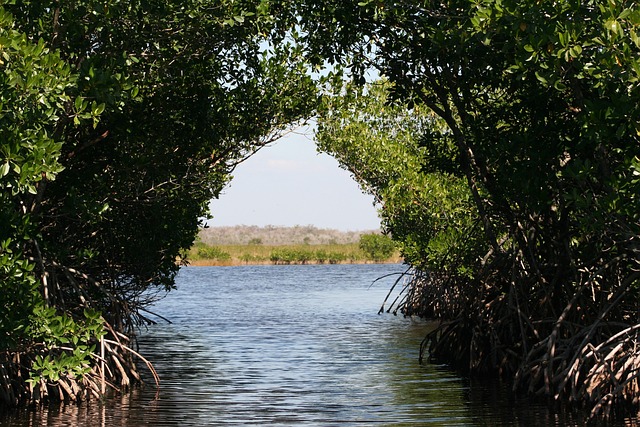
Eco mark certification: Participants are given incentives to participate in mangrove restoration by receiving Eco mark-certified green credits, which offers several advantages such as coastal protection, biodiversity support, and carbon sequestration. These credits promote ecological preservation, increase carbon offset efforts, and promote economic sustainability.
Sustainable building and infrastructure: Green credit program rely heavily on sustainable building and infrastructure development. Sustainable projects include energy-efficient construction, the use of environmentally friendly materials, and a lower environmental impact. Earning green credit points for such projects promotes environmentally friendly urban design and building. Restoration activities are centered on modernizing existing infrastructure to meet environmentally friendly requirements.
How to Participate in the Green Credit Program
To get started, you first need to register on the central government’s website/app. The Green Credit Registry and Trading Platform, which is being developed in collaboration with experts from ICFRE, will make it easier to register and then purchase and sell Green Credits.
After you take action, it will be validated by a licensed agency. The Administrator will issue your Green Credit certificate after it has been accepted. This evaluation takes into account factors such as resource consumption, scale, and scope to ensure that your environmental impact is in line with the planned outcome. Your environmental initiatives will be recognized and rewarded.
Private Sector Participation in the Green Credit Program
L&T, Indian Oil Corporation, Adani Enterprises Limited, GAIL, NTPC, ReNew Power, Ballard Power, Ashok Leyland, Reliance, and Hindustan Zinc are some of the private sector companies and PSUs that have participated in the green credit program.
The Green Credit Program is a significant initiative towards building a more sustainable future for India. It is an opportunity for everyone to contribute and make a difference. Let’s all join hands to protect our planet
References
https://pib.gov.in/PressReleaseIframePage.aspx?PRID=1967476
About Author
Dhruveena is a Creative Content Writer studying B.Tech Geo-Informatics. Drawing, Photography, and Writing are among her interests. She likes combining her artistic interests to produce thought-provoking and meaningful creations. She is also passionate about Geo-Informatics Engineering.
Questions and Answers on Chandrayaan 3 Mission
We have curated Questions and Answers on Chandrayaan 3 Mission which will help you learn about the background, technology, scientific significance and people behind the prestigious mission of India. We will also update the latest Questions and Answers on Chandrayaan 3 Mission until the completion of mission.
1. What is the name of the launch vehicle that was used to launch the Chandrayaan-3 mission?
a) GSLV Mk.III (LMV3)
b) PSLV C51
c) Ariane 5
d) Long March 3B
Answer: The Launch Vehicle Mark-3 or LVM3 (previously referred as the Geosynchronous Satellite Launch Vehicle Mark III or GSLV Mk III)
2. What are some of the challenges that the Chandrayaan-3 mission will face?
a) The harsh lunar environment
b) The low gravity of the Moon
c) The communication delay between Earth and the Moon
d) All of the above
3. How many countries have successfully landed a spacecraft on the Moon?
a) 2
b) 3
c) 4
d) 5
4. What is the scientific significance of the Moon’s south pole?
a) It is thought to be rich in water ice.
b) It is thought to be geologically active.
c) It is thought to be a good place to study the lunar environment.
d) All of the above
5. When was the Chandrayaan-3 mission launched?
a) July 14, 2023
b) August 23, 2023
c) September 7, 2022
d) October 14, 2022
6. What is the name of the lander that will land on the Moon’s south pole?
a) Vikram
b) Pragyan
c) Chandrayaan-3 Orbiter
d) None of the above
Answer: The Chandrayaan-3 lander was named after Vikram Sarabhai, the father of the Indian space program.
7. What is the name of the rover that will be deployed from the lander?
a) Vikram
b) Pragyan
c) Chandrayaan-3 Orbiter
d) None of the above
Answer: The Chandrayaan-3 rover was named after the Sanskrit word “Pragyan”, which means “wisdom” or “supreme intelligence”.
8. Who is the director of the ISRO during Chandrayaan-3 mission?
a) S. Somanath
b) K. Sivan
c) A.S. Kiran Kumar
d) None of the above
9. Which of the following is the maximum speed of the Pragyan rover?
a) 1 cm/s
b) 10 cm/s
c) 1 m/s
d) 10 m/s
Answer: The Pragyan rover has a maximum speed of 1 cm/s.
10. What is the lifespan of the rover and lander in Chandrayaan-3?
a) 1 Earth day
b) 7 Earth days
c) 14 Earth days
d) 28 Earth days
Answer: The rover and lander in Chandrayaan-3 are designed to operate for one lunar day, which is about 14 Earth days.
Take an interactive Quiz on Chandrayaan-3 and discover the challenges faced, technology and scientific importance behind the Chandrayaan-3 mission.
Chandrayaan-3 Quiz
Chandrayaan-3 is a landmark mission for India's space program. It is India's third lunar mission launched on July 14, 2023 from Satish Dhawan Space Centre in Sriharikota, India. The mission consists of a lander, a rover, and an orbiter.
Take the Chandrayaan-3 Quiz and discover the challenges faced, technology and scientific importance behind the Chandrayaan-3 mission.
Interested to learn more about background, technology, scientific significance and people behind the prestigious mission of India: Questions and Answers on Chandrayaan 3 Mission
Image Credits: By Indian Space Research Organisation (GODL-India), GODL-India, https://commons.wikimedia.org/w/index.php?curid=72037376
Oceans Quiz
Indian City Nicknames Quiz
India is a country with rich heritage, cultural diversity, and vibrant cities. Every city in India has its own distinct personality and it often holds nickname that captures its essence. Test your knowledge with the Indian City Nicknames Quiz and see if you can can match the Indian city to its nickname.
We hope you enjoyed the Indian City Nicknames Quiz! Interested in More Quizzes? Explore More Quizzes Here!!
5 Famous Artworks of Scientific Significance
Throughout History, Artworks served as a medium to express Scientific Ideas, explore Scientific Concepts, and provoke Scientific Inquiry into the general public as well as the scientific community. These Artworks connect Arts and Science which are often viewed as separate disciplines. In this article, we delve into the Scientific Significance of 5 Iconic Artworks that exemplify the integration of Art and Science.
Starry Night
In June 1889, Van Gogh admitted himself into the Saint-Paul-de-Mausole asylum in France to seek treatment for his mental illness. One night during his stay at the asylum, he looked out of his window and was mesmerized by the beauty of the night sky. Inspired by this beautiful scenery, Dutch post-impressionist artist Vincent van Gogh painted the famous painting, The Starry Night.
The painting has been the subject of scientific interest for its accurate depiction of the night sky, celestial objects and the atmospheric turbulence.
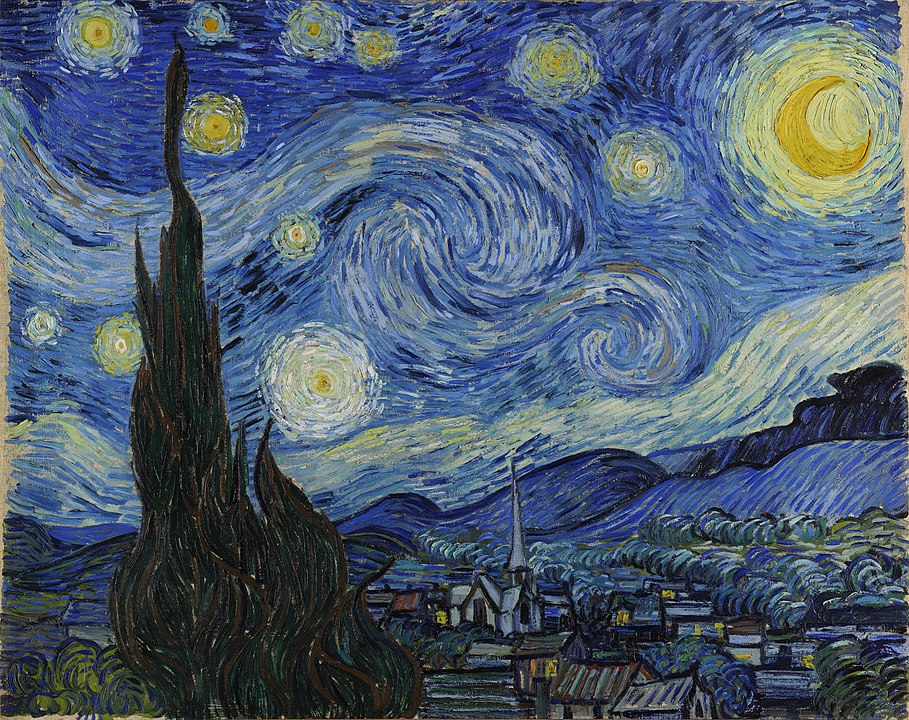
The Starry Night portrays the night sky with celestial objects such as the moon, stars, and even planet Venus. This gives us an idea of Van Gogh’s understanding of astronomy.
The painting is filled with swirling brushstrokes to represent stars and other objects in the sky. Scientists believe that the swirling brushstrokes were used to depict the movement of stars and the sky which they call atmospheric turbulence. This is the same reason why stars twinkle in the night sky. Swirling clouds can also be seen in the painting.
The art work of Van Gogh also focused on luminance which is a kind of art that uses light to depict a scene in time. Brushstrokes are used to create glowing light which seems to come out of painting in this form of art.
Van Gogh’s painting gave researchers potential insights into his mental state who struggled with mental illness throughout his life. Swirling patterns and vibrant colors in the painting can be seen as a visual representation of Van Gogh’s experiences of mental distress. Neuroscientists analyzed the painting and studied how the brain processes visual information.
Today, Starry Night is kept in the Museum of Modern Art in New York which continues to inspire and fascinate people around the world.
The Great Wave off Kanagawa
The Great Wave off Kanagawa is a woodblock print created around 1830-1833 by the Japanese artist Katsushika Hokusai. It is known as one of the best works of Hokusai and first in his series of prints called “Thirty-six Views of Mount Fuji.
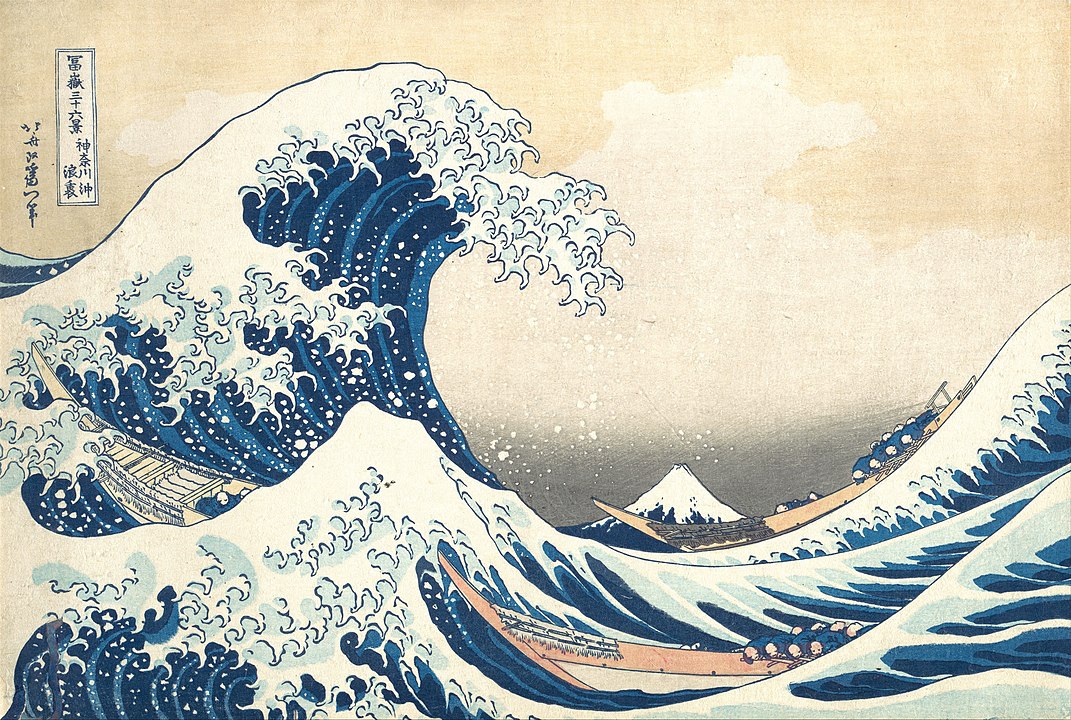
The Great Wave off Kanagawa depicts a large wave with Mount Fuji in the background and three boats struggling to navigate through the storm-tossed sea. Cumulonimbus clouds can also be seen between the viewer and Mount Fuji.
Although The Great Wave off Kanagawa reflects the cultural and artistic traditions of Japan, it also has some features which are of scientific interest.
The composition of the print is dominated by the sea and the great waves. The waves appear to resemble solitary waves which can be seen in nature as tsunami waves or rogue waves. Solitary waves maintain the same shape and speed while propagating through a medium. The waves in the print also seem to depict a perfect spiral which portrays energy passing through the water in circular motion.
The snow-capped Mount Fuji can be seen in the background surrounded by dark colors suggesting the early morning. Cumulonimbus clouds can also be seen between the viewer and Mount Fuji. Cumulonimbus clouds generally indicate storms but no rain can be seen in the print.
Three fishing boats in the print transport live fish between markets. These boats have 8 rowers and can accommodate 30 people (Although only 22 can be seen in the picture).
The Great Wave off Kanagawa is a reminder of the power of nature and is considered one of the famous artworks of scientific significance.
The Vitruvian Man
The Vitruvian Man was created by Italian polymath Leonardo da Vinci in the late 15th century. The painting was inspired by a book written by Marcus Vitruvius Pollio who was a Roman Architect and Engineer. The Vitruvius book which described the proportions of the human body inspired da Vinci to explore the human anatomy and understand deeply about the human proportions.
The Vitruvian Man depicts a man standing with his arms and legs outstretched in a circle and square in two superimposed positions.
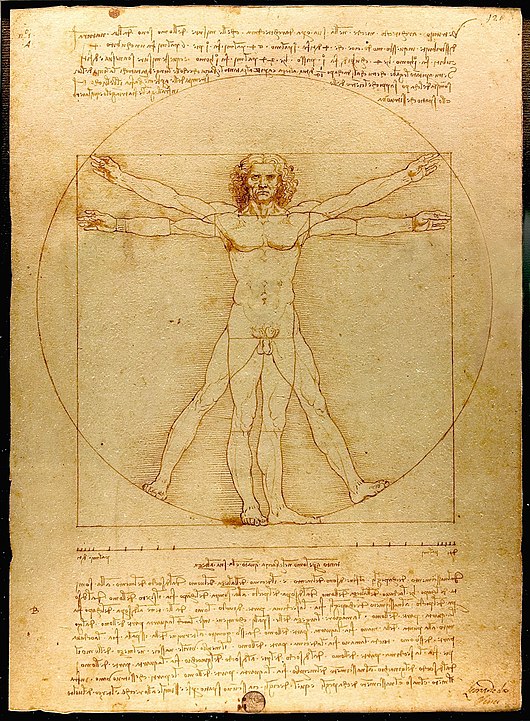
The painting provides some insights into the longstanding geometric problem of “Squaring A Circle”, which has been frustrating mathematicians since the days of Pythagoras!
The concept of Golden Ratio can also be seen in the Vitruvian Man by observing the ratio of the radius of the circle to the side length of the square in the painting.
The Vitruvian Man depicted the human body in a unique way exploring the geometry of perfect human proportions. It was believed that the center of the circle was placed on the navel of the man and the both fingertips and feet touch the circumference of the circle. Similar geometric representations of various parts of the body can be seen in the artwork.
Unlike other artworks, The Vitruvian Man is not displayed to the public everyday since artwork is the ink on the paper which can get damaged or faded due to the prolonged exposure to light. However, the artwork is exhibited to the public occasionally at Gallerie dell’Accademia in Venice.
The Persistence of Memory
In the year 1931, surrealist artist Salvador Dali created the renowned painting, The Persistence of Memory which explores various concepts that hold scientific importance. The painting showcases numerous surreal objects including his well known melting pocket watches. It is considered one of the famous artworks of scientific significance.
Salvador Dali was an admirer of Sigmund Freud (Austrian neurologist and psychoanalyst) and was influenced by his theories about dreams and the unconscious mind. Dali could incorporate ideas from his dreams into the paintings.
The Persistence of Memory depicted several dreamlike and surreal objects such as Melting Clocks on tree branches, Distorted profile of human (assumed to be Dali himself), Barren landscape, ants, empty shells and other Distorted Objects. Collectively, all these objects reflect Dali’s fascination with time, memory, and the subconscious mind.
The Melting Clocks in the painting appear to be soft and distorted, challenging the traditional notion of time as fixed and rigid. This exploration aligns with the concepts in physics such as Einstein’s theory of relativity which states that time is not absolute, but is relative to the observer’s frame of reference.
The Persistence of Memory has also garnered interest from psychological perspectives. Salvador Dali’s exploration of the unconscious mind and dream symbolism contribute to the deeper understanding of the human psyche. Dali’s painting aligns with the framework of Freudian psychoanalysis which taps into the realm of the subconscious.
Today, The Persistence of Memory is kept in the Museum of Modern Art (MoMA) in New York which continues to captivate audiences with its surreal and thought-provoking imagery.
Relativity
Maurits Cornelis Escher (M. C. Escher) was born on June 17, 1898 in Netherlands. He showed an early aptitude for drawing and had no formal training in mathematics. He began his career as a graphic artist but soon began to experiment with mathematical concepts in his artworks.
C. Escher is known for his mathematically inspired lithographs and woodcuts. He explored mathematical concepts such as tessellations, symmetry, hyperbolic geometry, and reflection in his artworks. Sometimes he would conduct his own research and implement mathematics into his artworks.
Relativity is an iconic artwork by M. C. Escher depicts a world where laws of gravity don’t apply. The Relativity portrays an architectural structure that has many Visual Paradoxes. The most prominent feature of the artwork is the staircases that seem to defy the laws of gravity. Featureless human-like figures can also be seen navigating in the labyrinthine like environment of the artwork.
Multiple perspectives can be seen in Relativity. The artwork challenges the viewer’s perception of space and orientation. The architectural structure contains doors, windows and even corridors that seem to be interconnected.
Relativity explores the spatial relationships between different objects that present in the architectural structure. Although gravitational forces exist in the artwork, it seem to be valid only based on the perception of the viewer.
Thus, Relativity is one of the famous artworks of scientific significance that explores gravity, geometry, optical illusion and perspectives.
Conclusion
The five artworks of scientific significance: Starry Night, The Great Wave off Kanagawa, The Vitruvian Man, The Persistence of Memory and Relativity bridge the gap between Art and Science, offering viewers with unique perspectives. These artworks Inspire Scientific Inquiry, Communicating Science to the Public and also Influence the Scientific Advancements.
References
http://www.crl.nitech.ac.jp/~ida/education/VitruvianMan/
https://www.leonardodavinci.net/the-vitruvian-man.jsp
Photos, Vector Graphics & Illustrations Credits
By Vincent van Gogh – bgEuwDxel93-Pg — Google Arts & Culture, Public Domain, https://commons.wikimedia.org/w/index.php?curid=25498286
By Katsushika Hokusai – Metropolitan Museum of Art: entry 45434, Public Domain, https://commons.wikimedia.org/w/index.php?curid=2798407
By Leonardo da Vinci – Leonardo Da Vinci – Photo from www.lucnix.be. 2007-09-08 (photograph). Photograpy: This image is the work of Luc Viatour. https://commons.wikimedia.org/w/index.php?curid=2738140
Disclaimer: The views, opinions and thoughts (including content in any form) expressed in this post belong solely to the author alone. Starry Stories does not guarantee the accuracy, completeness and validity of any statements made within this article. If you have additional questions or require more information, do not hesitate to contact us.
Mangroves: The Unsung Heroes Saving Our World
Climate Change and Global Warming pose a threat to our planet. One of the main reasons is the CO2 emissions resulting from the burning of fossil fuels. However, cutting down on CO2 emissions alone is not enough; storing carbon is also essential. Mangroves play an important role in this process.
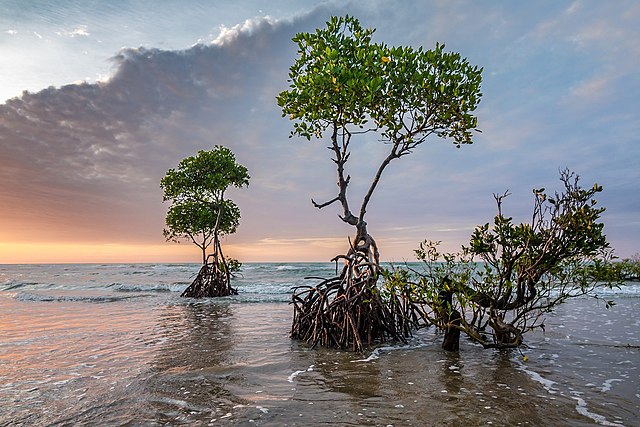
Mangroves are the wetlands (ecosystems partially or fully saturated with water at some or all points of time) found in the intertidal zone (the area between high tide and low tide) around the world, in tropical and subtropical regions.
They are halophytic in nature, meaning that they are salt-loving/tolerant and can grow in low-oxygen conditions in muddy areas but they cannot withstand freezing temperatures. They are usually found in upper half of inter-tidal zone.
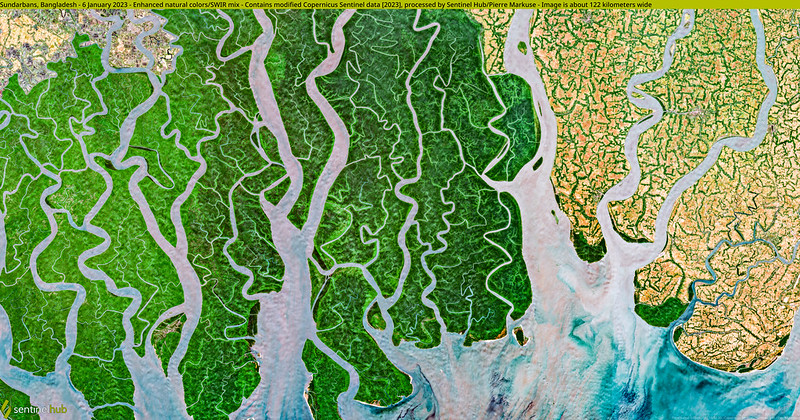
Mangroves are known as blue carbon ecosystem as they grow in coastal or marine environment and store carbon. Almost 50% of mangroves are deforested, degraded, or converted in the last few decades.
Fun Fact: The Sundarbans Reserve Forest in Bangladesh is the World’s Largest Contiguous Mangrove Forest.
Mangroves are Unsung Heroes in the fight against climate change, but they are currently under threat due to negligence and unsustainable living practices. Therefore, it is crucial that we stop neglecting them and start protecting and restoring mangrove habitats. Here are some reasons why
Mangroves protect our coasts
Their root system slows down water and encourages sedimentation, reducing coastal erosion and protecting coasts during storms by absorbing wave energy.
Mangroves provide livelihood
They are a breeding ground for fish, shrimps, and crabs, and a home to a wide range of species. This helps the local fisherman to have a good catch rate . They are used to produce honey, medicinal products furniture etc.
Water quality improvement
Their root system helps filter pollutants and salt making water clean. The excess nutrients due to near by agriculture and aquaculture fields can be absorbed by mangroves which helps prevent harmful algal blooms.
Mangroves act as Carbon sinks
As trees grow, they store carbon in leaves and other parts, and later, they are shed and converted into organic matter, releasing some carbon dioxide. But the roots of Mangroves help trap the organic matter in waterlogged soil and store them until they are intact. The carbon is stored above ground in trunks and leaves, and below ground in roots. Most of the carbon is stored in the soil. They store four times the carbon of other forests on land.
Mangroves are rich of biodiversity
Mangroves often accompany sea grasses and corals. They provide habitat to crabs ,shrimps, fish. Many birds migrate from distances to mangroves .
Watch this video about How Mangroves Help the Ocean and Why Mangroves are Unsung Heroes
Threats to Mangroves include
1. Deforestation for urbanization, coastal development, and timber.
2. Conversion of mangroves into agriculture and aquaculture – the accessibility of water resources and nutrient rich soil make the areas in which mangroves grow suitable for agriculture and aquaculture,the soil in which mangroves grow is alkaline in nature, but when cleared and converted, it becomes acidic in nature and gets barren and deserted.
3. Pesticides, insecticides, and other pollutants entering can affect the ecosystem.
4. Hydrocarbon extraction – oil spills, industrial waste can destroy mangroves. Oil and their by-products deposit on the roots of mangroves and affect mangroves and their surroundings.
5. Mismanagement of fresh water – mangroves grow in salt water, but they need a balance between fresh and salt water. Building dams on rivers affects the fresh water input, causing an imbalance leading to degradation.
6. Climate change – rising sea levels causing more influx of salt water leading to high salinity and affecting mangroves.
7. Deforestation of mangroves not only affects its biodiversity, but the carbon stored in the soil is oxidized and released as CO2.
Challenges in Mangrove Restoration
1. Choosing the right site – mangroves are usually found in the upper half of the intertidal zone. If they are planted higher, they may not be influenced by tidal waters. Planting them lower, like on mudflats that are saturated with water and low oxygen, may also pose a challenge.
2. Choosing the right species for the right site – planting in unsuitable places might affect the saplings. Trying to identify the species grown previously and the neighbouring species, and trying to combine different species, is crucial for biodiversity.
3. Connecting with local hydrology – building channels using various methods that work best.
4. Willingness of the landowner
5. Involving local communities – creating awareness and helping them understand the importance and outcomes.
Monitoring and learning on what method/technique works, what does not work, and why.
Case Studies for Mangrove Restoration
Mikoko Pamoja Project – Gazi Bay, Kenya
The world’s first community-based conservation project, where local communities made money by conserving mangroves instead of cutting them. The organic matter stored in the soil by protecting mangroves is converted into carbon dioxide equivalents and traded in the voluntary carbon credit market.
Conversion of Shrimp Pond to Mangrove – Bann Lang Da, Krabi, Thailand
The site was previously occupied by mangroves, which were later deforested and flattened for shrimp production, and then left without any use. It was below the average sea level but surrounded by mangroves, so channels were built for drainage, such that the inflow and outflow are the same, allowing pollutants to be filtered and seeds to be brought for natural regeneration.
Restoration of Mangroves by Other Methods
Mr. Anant Shankar, IFS, started the Mangrove Mitra initiative with the idea of surveying and documenting mangroves that can be accessed by anyone. In the twin deltas, the availability of fresh water is relatively low in the Krishna delta. Mr. Anant Shankar, along with his team, used the fishbone method, which is in the shape of a fishbone, to dig channels at a 45° angle to the main channel for better water flow and mangrove growth.
Understanding the importance of mangroves not just as trees but also as a nature-based solution is necessary in the present situation. Mangroves are unsung heroes in the fight against climate change, and it is crucial to recognize their role in mitigating the impacts of climate change.
Mangrove Restoration Techniques
Mangrove Restoration Techniques employed in Coringa Wildlife Sanctuary in Andhra Pradesh state of India. The satellite images obtained from Google Earth shows Fish Bone Technique (fishbone channel plantation method) deployed in the region.
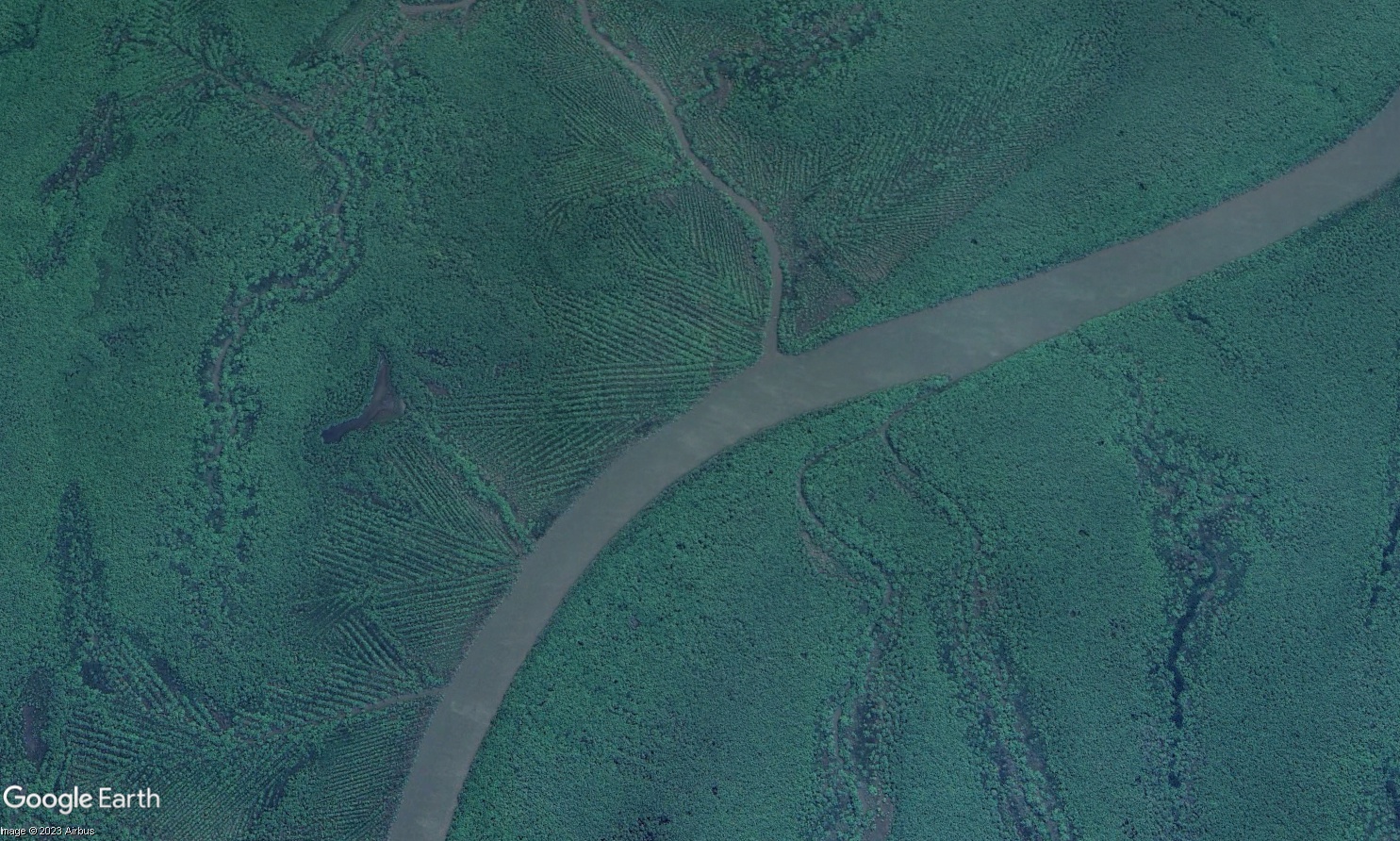
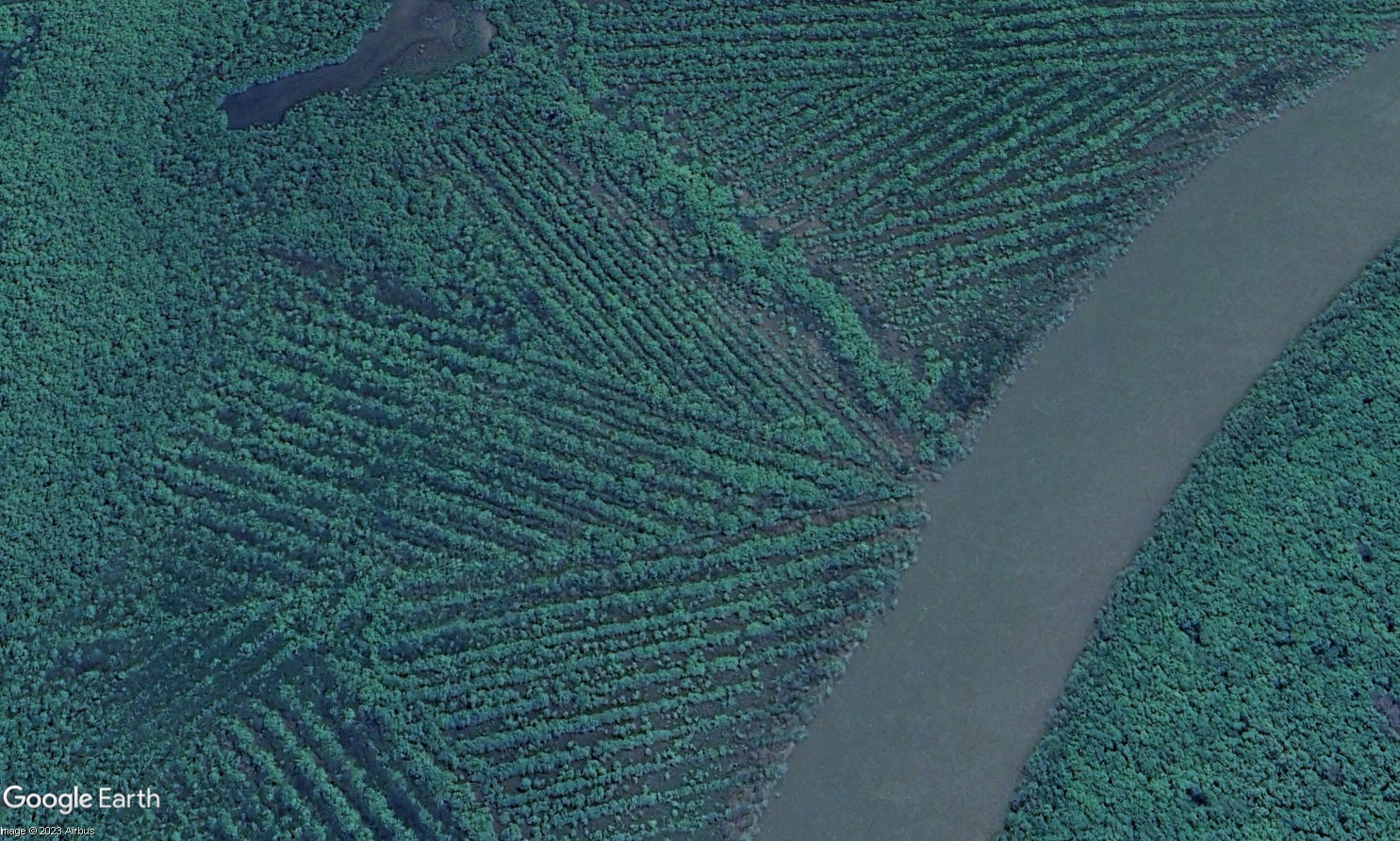
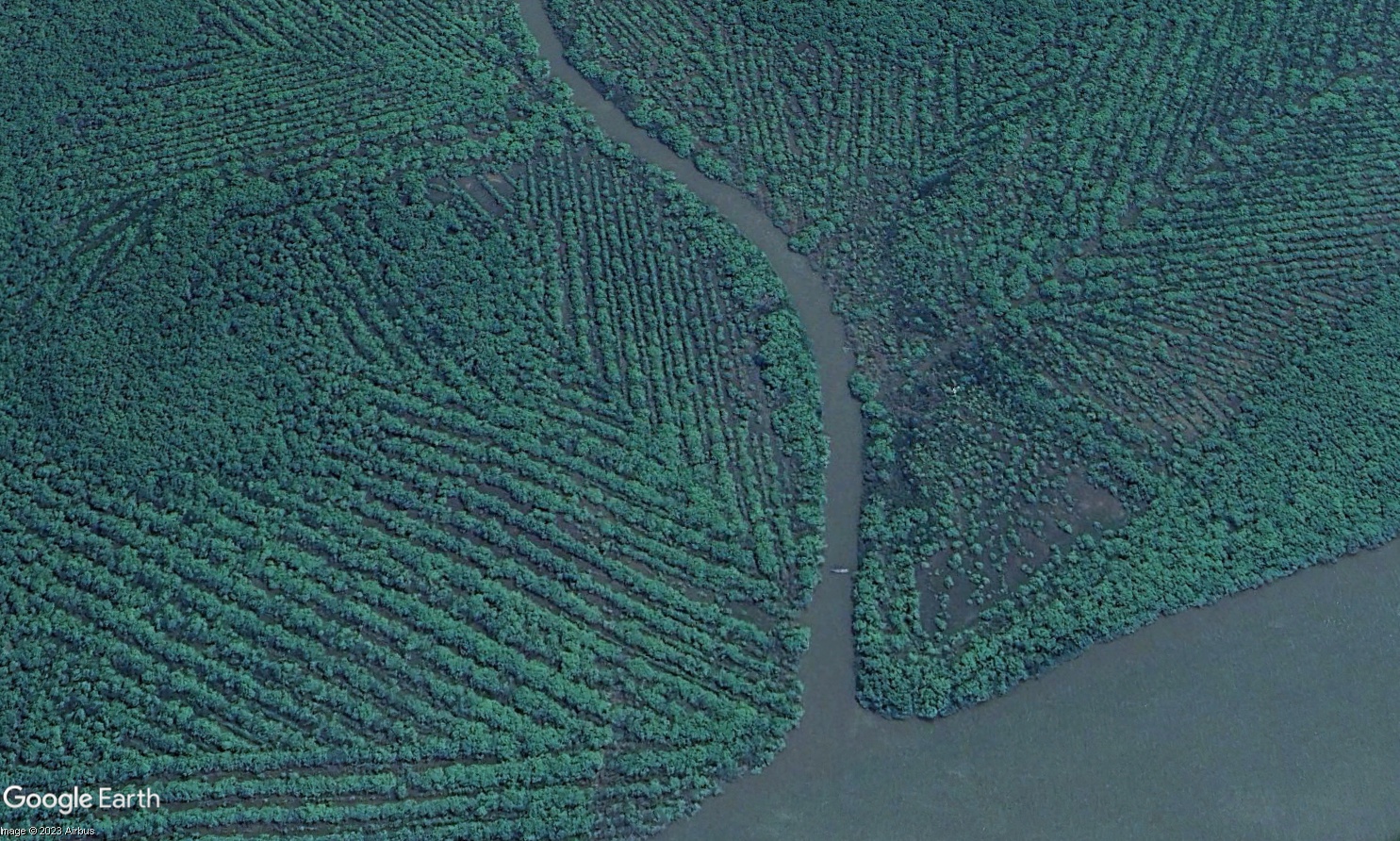
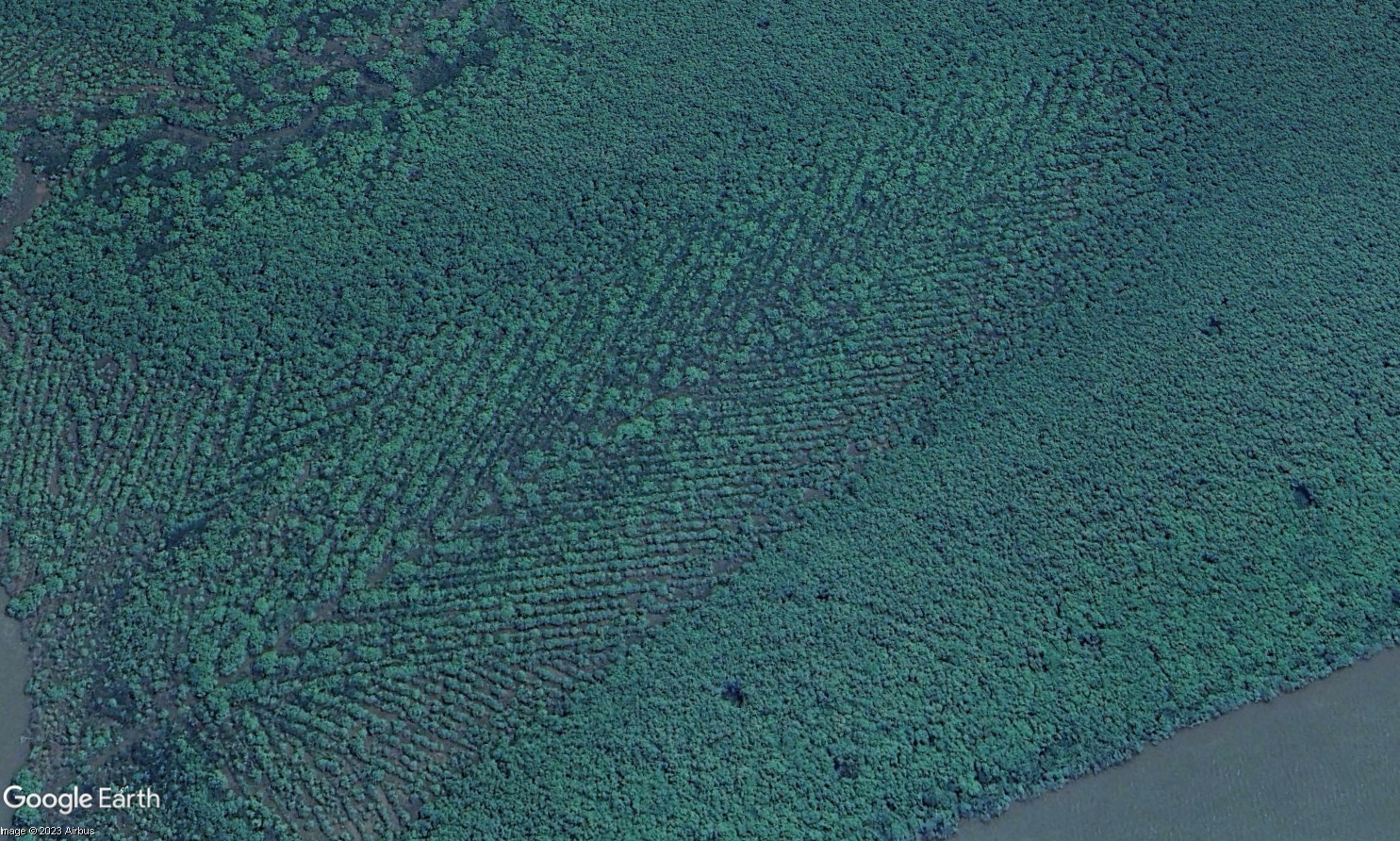
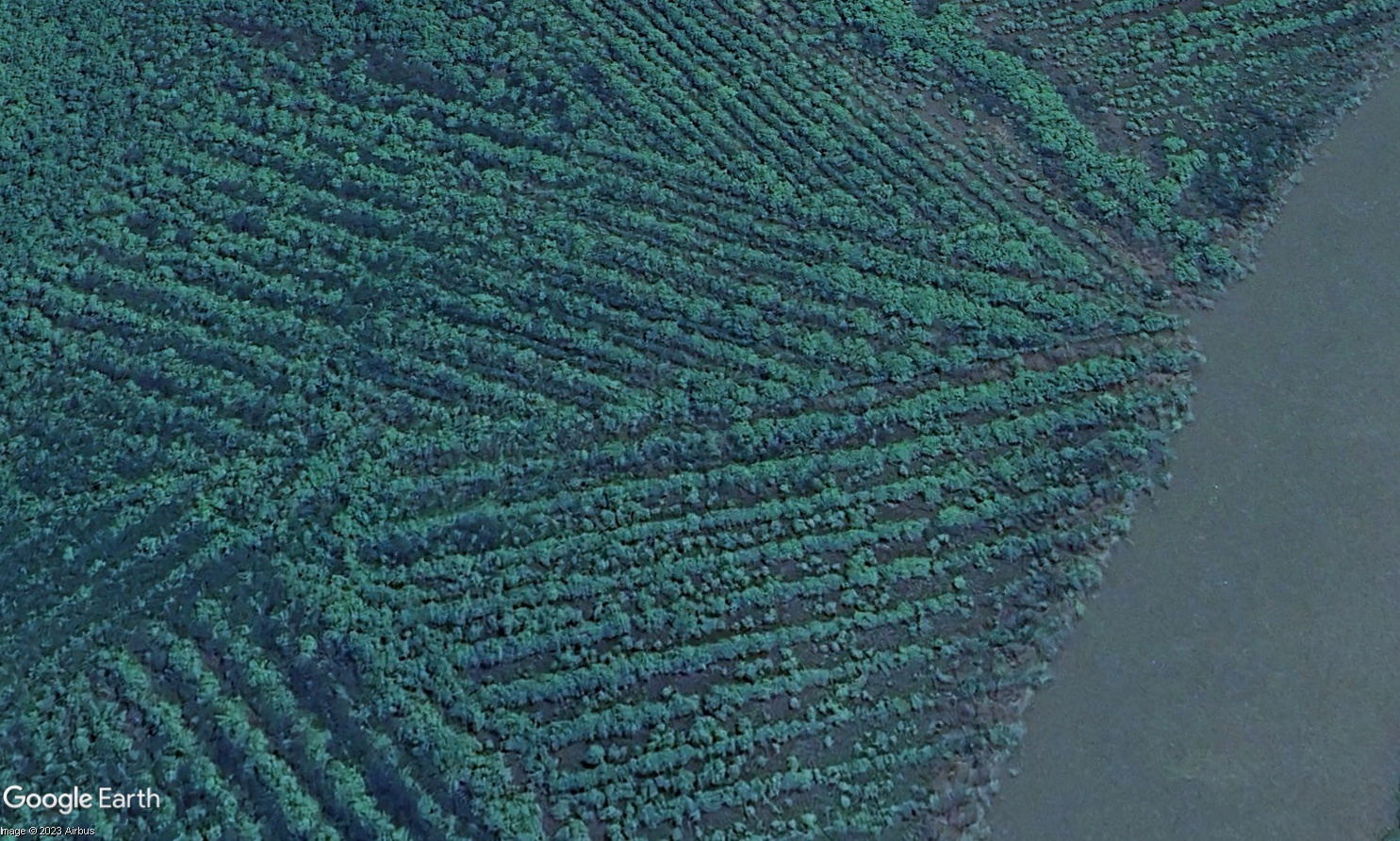
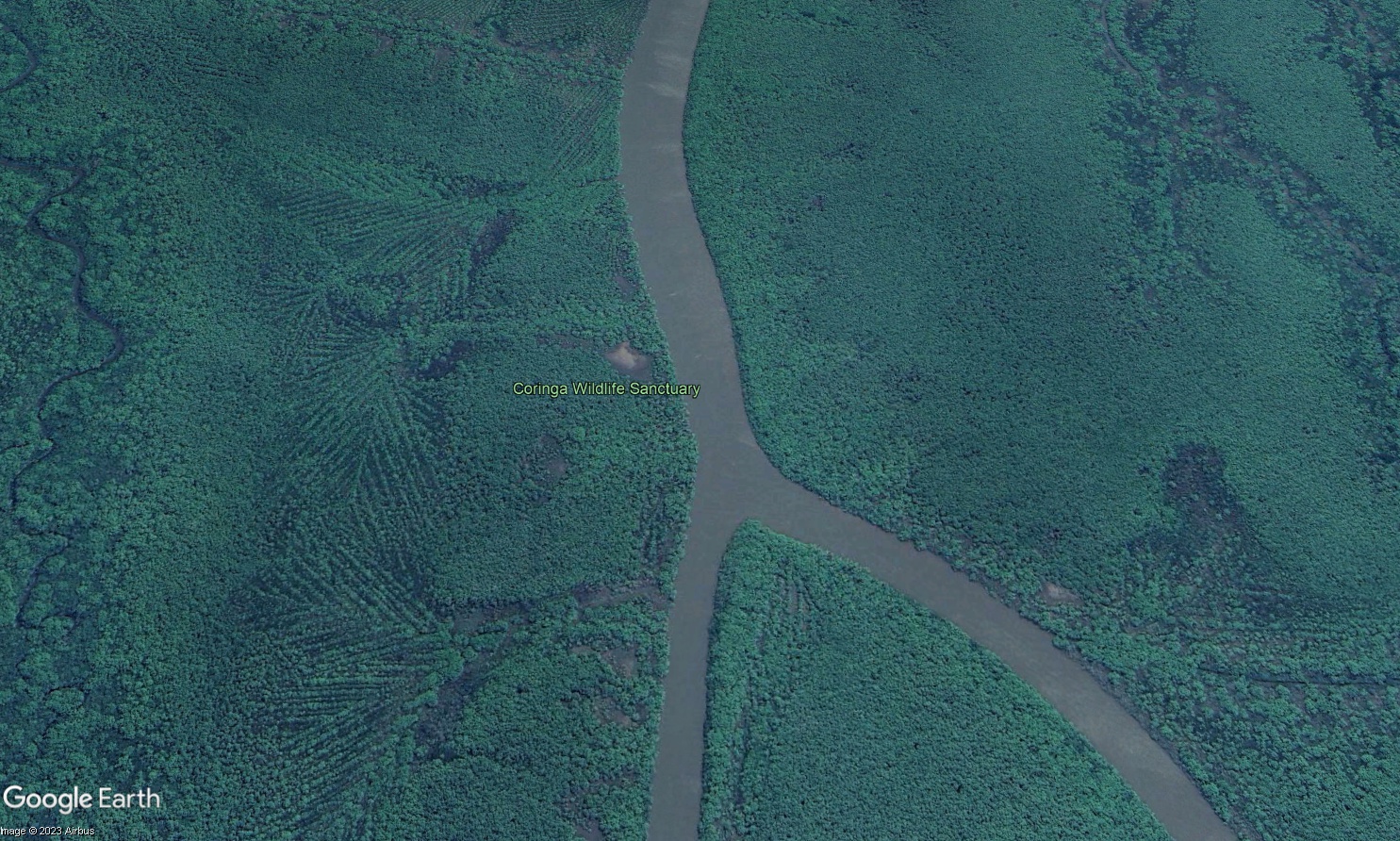
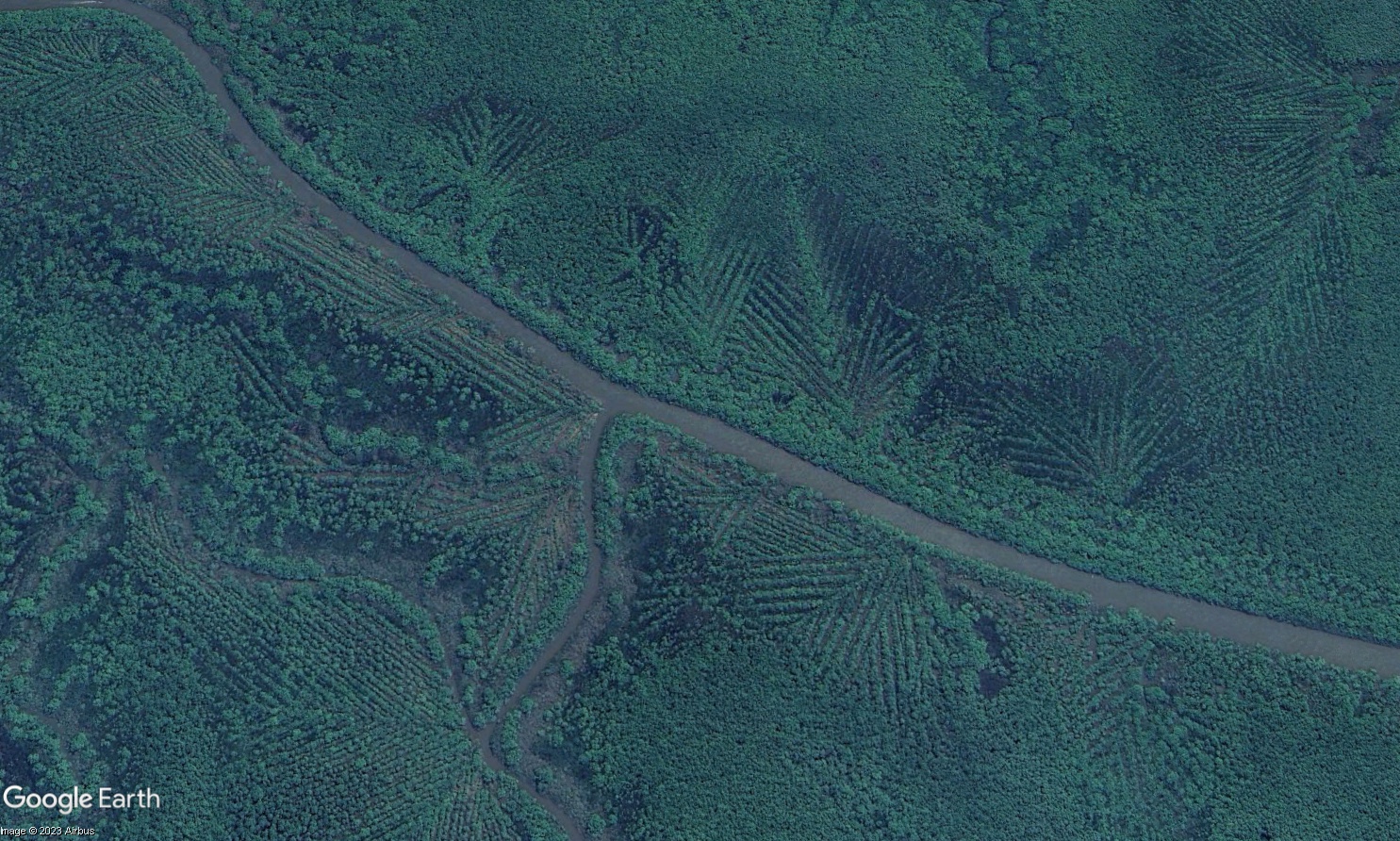
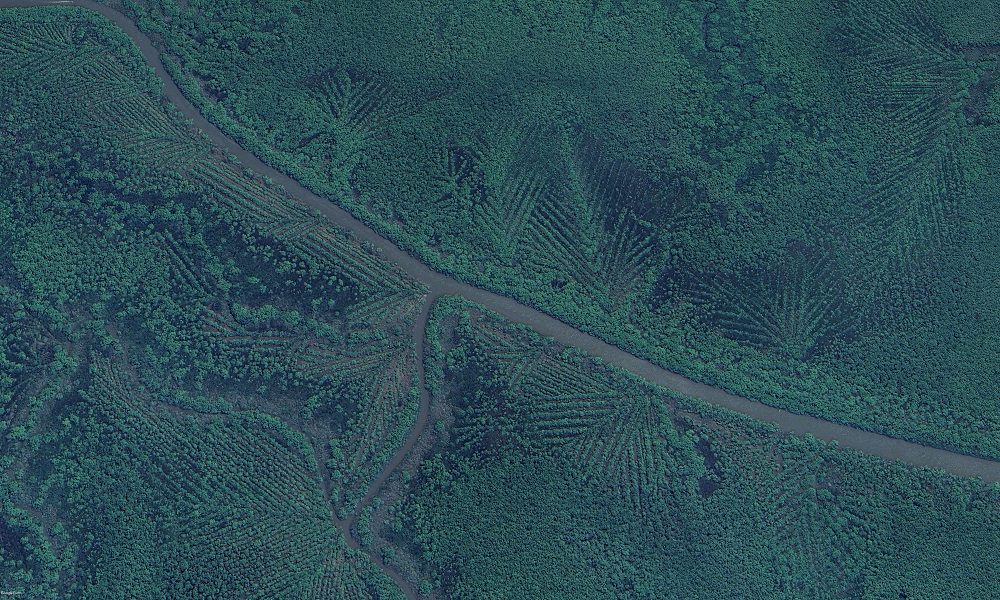
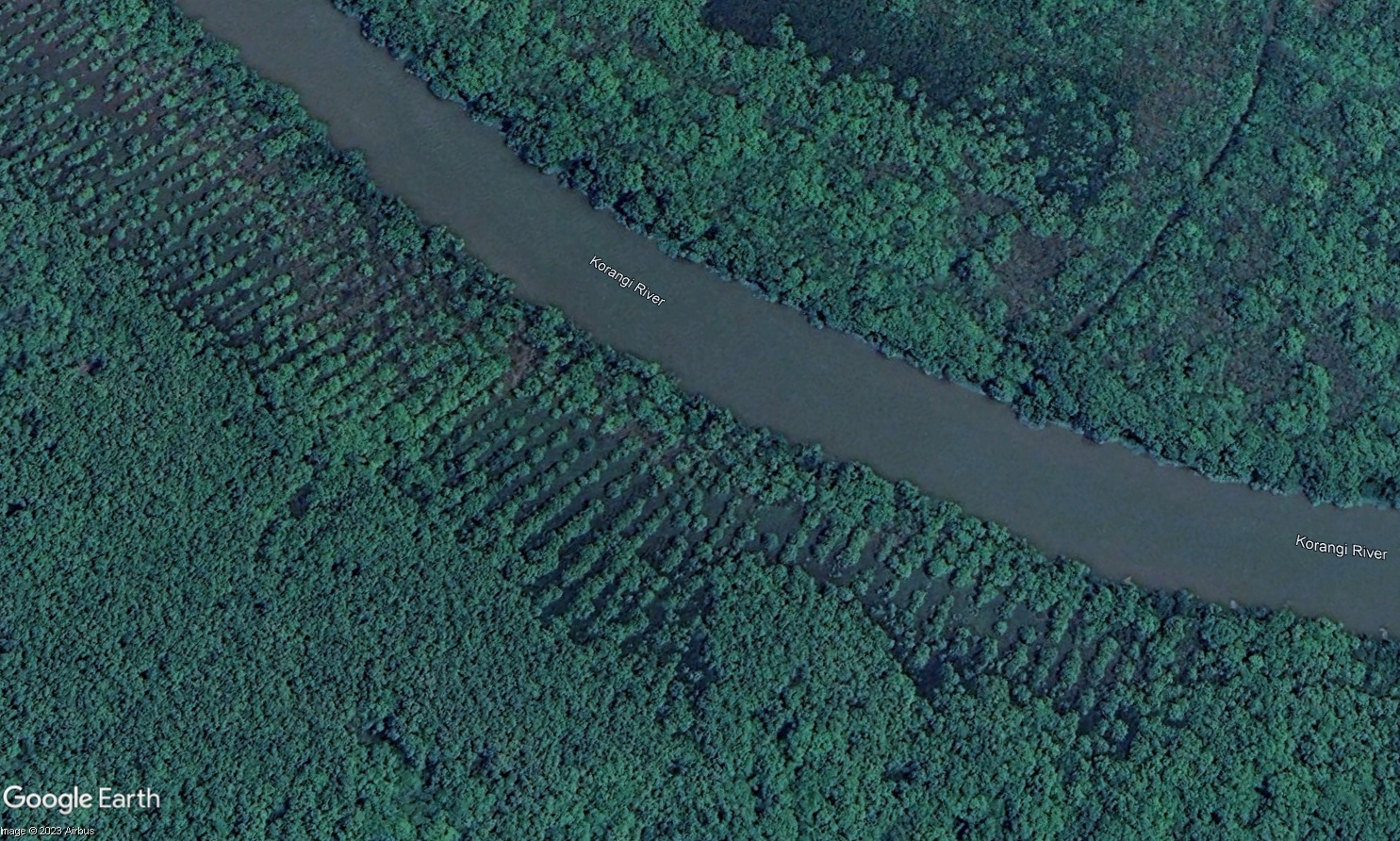
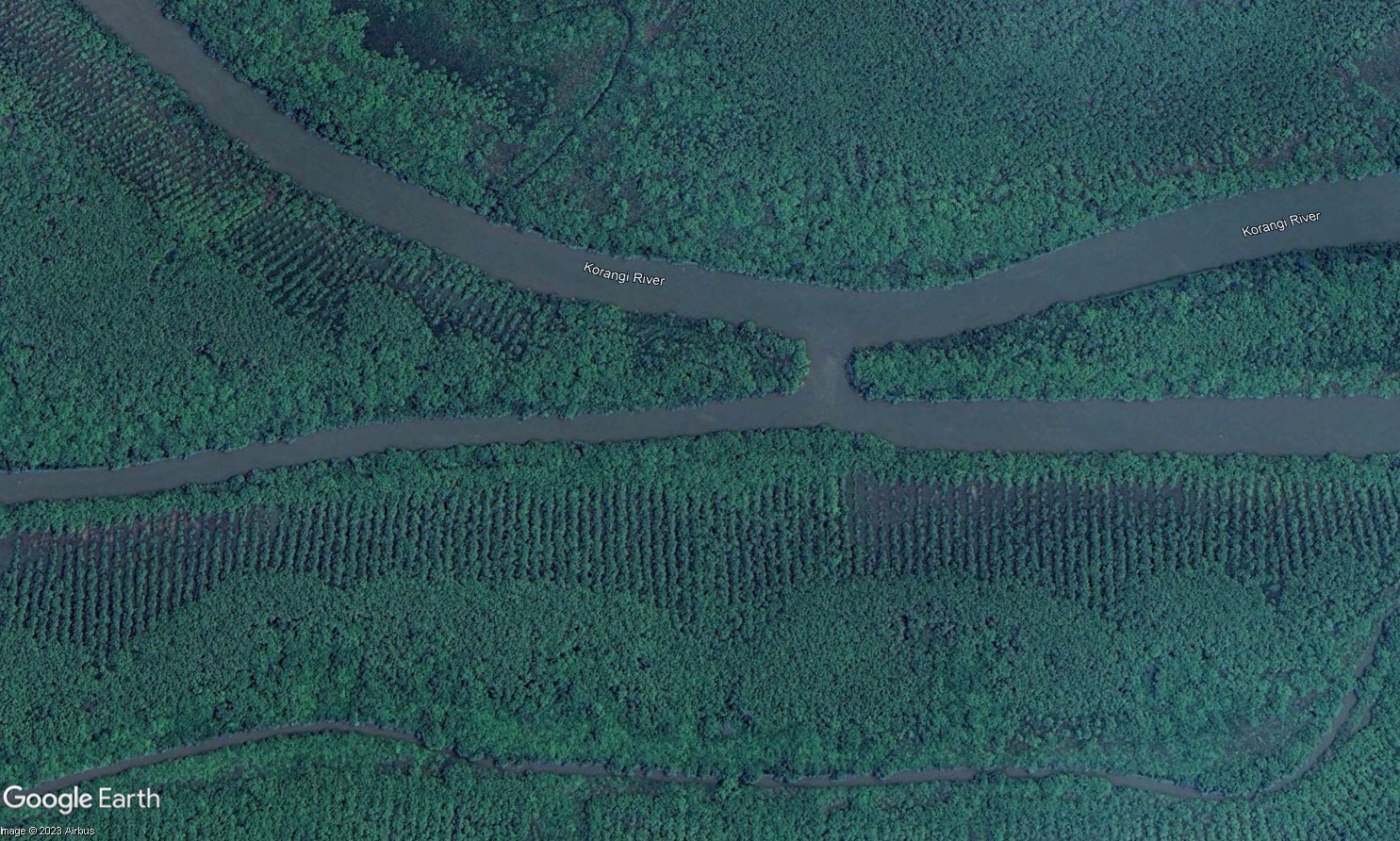
ABOUT AUTHOR
Dumpala Lahari is currently pursuing her B.Tech in Geo-Informatics Engineering, Andhra University. She is Versatile, Creative and an Explorer who is constantly evolving and always changing.

